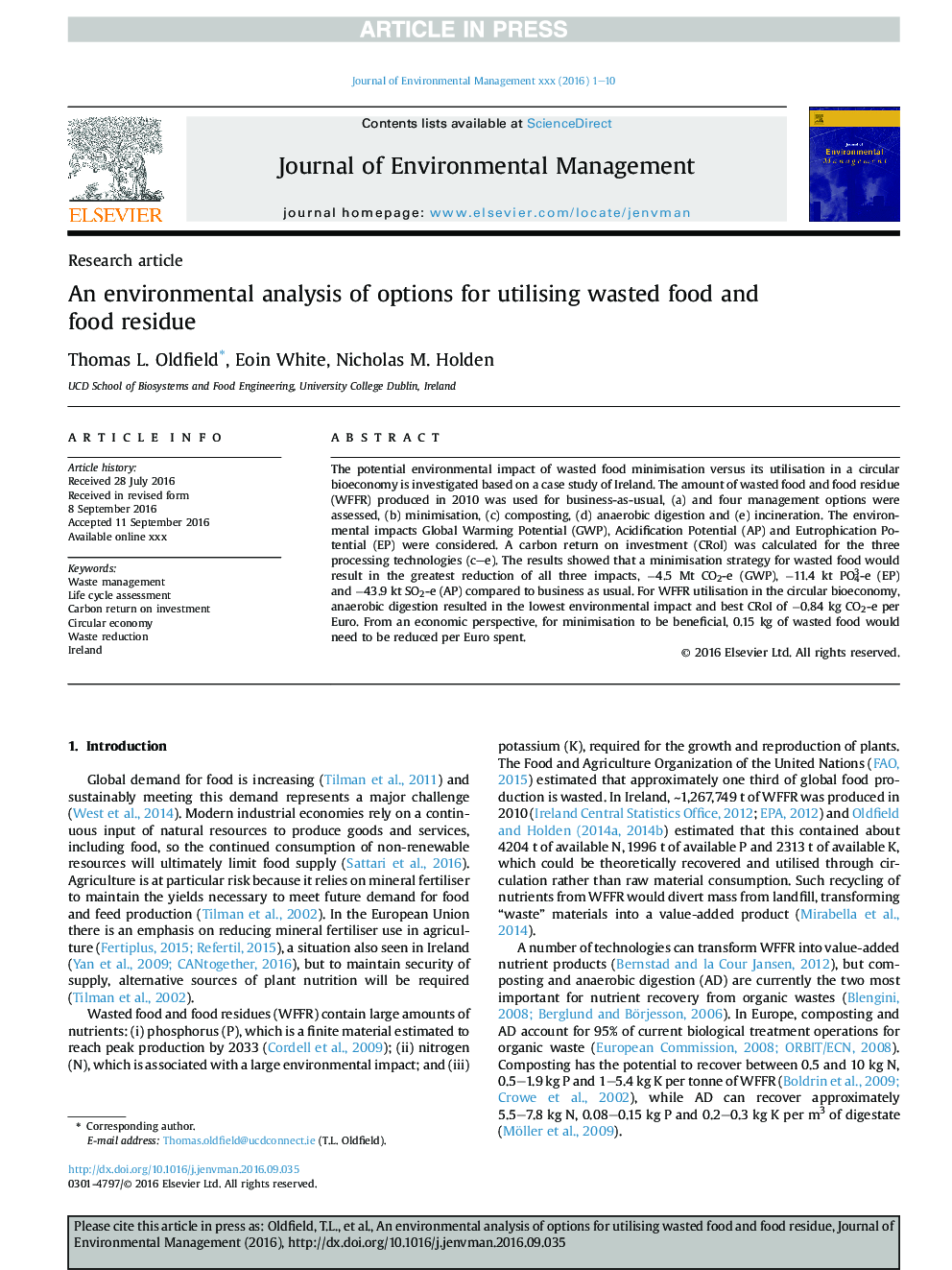| Article ID | Journal | Published Year | Pages | File Type |
|---|---|---|---|---|
| 5117220 | Journal of Environmental Management | 2016 | 10 Pages |
Abstract
The potential environmental impact of wasted food minimisation versus its utilisation in a circular bioeconomy is investigated based on a case study of Ireland. The amount of wasted food and food residue (WFFR) produced in 2010 was used for business-as-usual, (a) and four management options were assessed, (b) minimisation, (c) composting, (d) anaerobic digestion and (e) incineration. The environmental impacts Global Warming Potential (GWP), Acidification Potential (AP) and Eutrophication Potential (EP) were considered. A carbon return on investment (CRoI) was calculated for the three processing technologies (c-e). The results showed that a minimisation strategy for wasted food would result in the greatest reduction of all three impacts, â4.5 Mt CO2-e (GWP), â11.4 kt PO43-e (EP) and â43.9 kt SO2-e (AP) compared to business as usual. For WFFR utilisation in the circular bioeconomy, anaerobic digestion resulted in the lowest environmental impact and best CRoI of â0.84 kg CO2-e per Euro. From an economic perspective, for minimisation to be beneficial, 0.15 kg of wasted food would need to be reduced per Euro spent.
Related Topics
Physical Sciences and Engineering
Energy
Renewable Energy, Sustainability and the Environment
Authors
Thomas L. Oldfield, Eoin White, Nicholas M. Holden,
